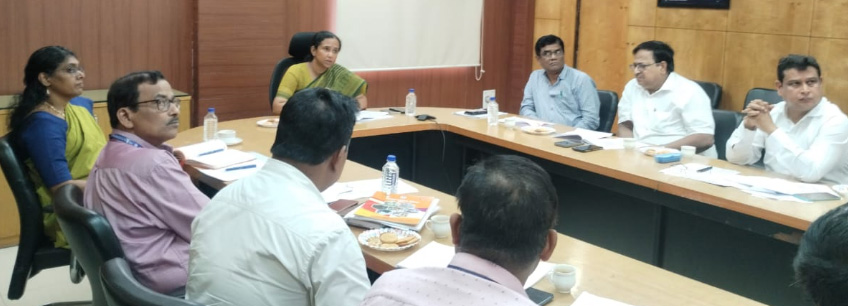Bhubaneswar: In a proactive move to bolster public health ahead of monsoon, the Health and Family Welfare Department, led by Secretary Aswathy S., convened a high-level review meeting today to strategize on containing vector and water-borne diseases.
Smt.Aswathy emphasized the need for intensified awareness activities at the grassroots level and ensuring a sufficient stock of essential drugs across all healthcare tiers, from ASHA workers to district hospitals. To foster community-level prevention, she directed the mobilization and orientation of women self-help groups (WSHGs), community leaders, and multi-purpose health workers (MPWHs).
A significant focus was placed on ensuring the actual use of long-lasting insecticidal nets (LLINs) at the household level, with Chief District Medical and Public Health Officers (CDMPHOs) tasked to oversee this through ASHA workers and MPHWs.
Senior officers from the Directorate of Public Health and the National Health Mission will undertake grassroots visits to ensure 100% LLIN utilization, availability of testing devices, adequate drug stocks, and robust surveillance, screening, and testing. The Director of Public Health was advised to develop a detailed schedule for these visits, prioritizing districts that reported a higher number of cases in previous years.
Discussions also covered issuing advisories for the proper cleaning of overhead water tanks and sanitization of water sources in residential complexes and hostels before the reopening of educational institutions. Regular water quality testing, disinfection, and monitoring in both rural and urban areas will be carried out under the oversight of Mission Director Dr. Brundha D.
The meeting identified seven districts—Rayagada, Kalahandi, Koraput, Kandhamal, Malkangiri, Gajpati, and Boudh—as historically prone to malaria cases, to which over 40.49 lakh LLINs have been allotted for vulnerable populations. Additionally, Sundargarh and Khordha districts, which saw a higher incidence of dengue last year, were directed to intensify preventive and surveillance activities.
The meeting, held in a hybrid mode, saw the participation of CDMPHOs from all districts, Additional District Public Health Officers, senior officials from various directorates, the National Health Mission, and experts and consultants specializing in vector-borne diseases


